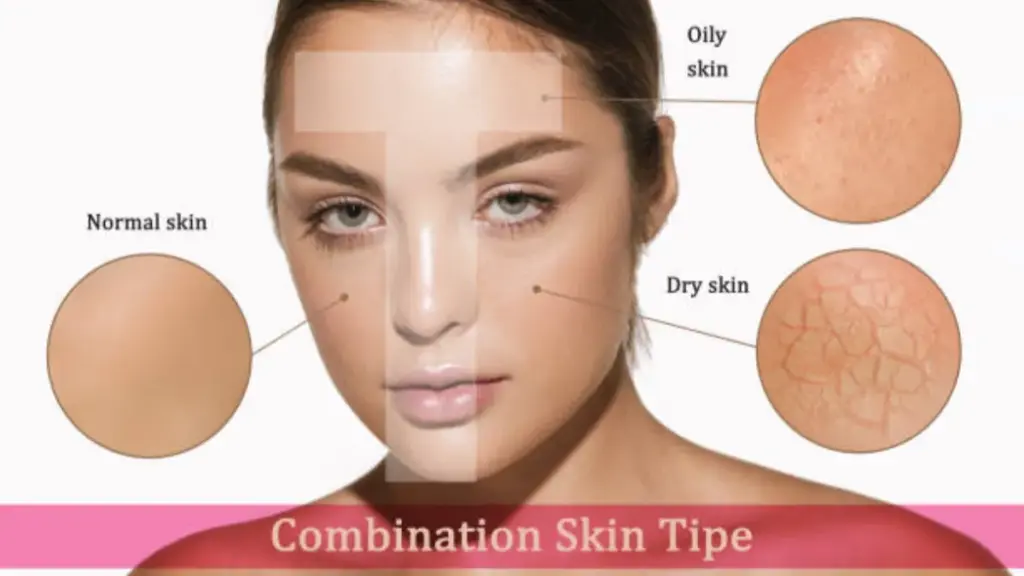Caring for combination skin often feels like managing two different skin types at once. The goal is balance, keeping skin hydrated without causing excess shine, and controlling oil without drying out the rest of your face.
Written from the perspective of Oully, a professional private label beauty and personal care manufacturer, it offers a formulation-based approach to help skincare brands and distributors develop effective solutions that bring harmony to combination skin.
Understanding Combination Skin and Its Unique Needs

Piel combinada, also known as mixed skin, falls between oily and dry skin on the skin type spectrum. It presents dual behavior: aceitoso in the center (forehead, nose, and chin) and drier or normal on the outer areas, such as the cheeks and jawline.
The challenge lies in addressing both extremes without overcorrecting either. Excess oil production can lead to clogged pores and breakouts, while dry patches may feel tight or flaky. The right skin care regimen for combination skin uses gentle yet targeted steps to restore harmony.
| Area | Typical Condition | Recommended Focus |
| T-Zone (Forehead, Nose, Chin) | Aceitoso, shiny, prone to congestion | Oil control, exfoliation |
| Cheeks / Outer Face | Normal to dry, sometimes tight | Hydration, barrier repair |
| Overall Skin | Uneven texture, mixed sensitivity | Gentle balance and protection |
Consistency and balance are essential. Rather than treating the entire face as one skin type, a dual approach ensures both hydration and oil regulation coexist effectively.
How to Identify If You Have Combination Skin
Determining whether you have combination skin is straightforward once you know what to look for. People with this skin type often experience contrast — oily shine in the T-zone and dryness elsewhere. Recognizing these patterns helps you create a face care routine for combination skin that targets each area appropriately.
Common signs of combination skin include:
- Noticeable shine on the forehead, nose, and chin by midday
- Dry or tight feeling around the cheeks or temples
- Makeup separating or fading unevenly across the face
- Occasional breakouts in the T-zone
- Fine flaking or roughness on the cheeks
Quick at-home test:
After cleansing your face, wait for 30 minutes without applying any products. If some areas appear shiny (especially the T-zone) while others feel tight or flaky, you likely have combination skin.
Understanding this pattern allows you to personalize your skin care routine for combination skin, adjusting product textures and application areas as needed.
The Ideal Daily Skin Care Routine for Combination Skin

A consistent, well-structured routine helps maintain balance and minimize fluctuations in oil or dryness. Your combination skin care routine should focus on gentle cleansing, adequate hydration, and protective layering.
Morning Routine
- Limpiador: Use a mild, gel-based or foaming cleanser that removes oil without stripping moisture.
- Virador (optional): Choose a balanced toner with niacinamide or hyaluronic acid to refresh and prep the skin.
- Suero: Apply a lightweight hydrating serum with ácido hialurónico to support moisture retention. If your concern includes dullness, add a vitamina C suero.
- Hidratante: Opt for a gel-cream or oil-free moisturizer that balances hydration without heaviness.
- Protector solar: Finish with a broad-spectrum SPF 30 o superior that offers a matte or semi-matte finish.
Evening Routine
- Double Cleanse: Begin with an oil-based cleanser to dissolve makeup or SPF, followed by your gentle foaming cleanser.
- Treatment Actives: Alternate between a BHA (ácido salicílico) for the oily T-zone and a hydrating serum or retinol for overall renewal.
- Hidratante: Use a slightly richer formula at night if your cheeks feel dry. Focus on ingredients like ceramides and squalane for barrier repair.
Consejo: Adjust product weights seasonally — lighter gels in humid months, richer creams in cooler weather. The goal is a dynamic yet balanced approach that evolves with your environment.
Top Ingredients That Work Best for Combination or Mixed Skin
Understanding ingredient performance is key to effective care. Certain actives offer universal benefits that balance hydration and sebum regulation simultaneously.
Best ingredients for combination skin include:
- Hyaluronic Acid: Hydrates deeply without heaviness.
- Niacinamida (2–5%): Refines pores, regulates oil, and strengthens the skin barrier.
- Ceramidas: Maintain skin integrity and prevent water loss in dry areas.
- Zinc PCA: Helps balance sebum and reduce shine in the T-zone.
- Salicylic Acid (BHA): Clears congested pores and minimizes breakouts.
- Vitamina C: Brightens dull areas and supports collagen.
Avoid heavy oils like coconut oil or highly occlusive creams that can clog pores, and stay clear of harsh alcohol-based products that over-dry the cheeks.
Professional and Brand Solutions
En esta etapa, it’s worth mentioning how innovative formulation can elevate product performance.
As a private label beauty and cuidado personal manufacturer, Olly partners with skincare brands and distributors to develop balanced, non-comedogenic formulas ideal for combination skin.
Our R&D expertise spans lightweight gel creams, refining serums, and gentle cleansers, ensuring each formulation achieves both hydration and sebum control. For brands seeking effective, scientifically driven products, Oully provides complete OEM/ODM solutions, De la formulación al empaque, tailored for market-ready results.
Seasonal & Lifestyle Adjustments to Your Skin Care Regimen

Combination skin often reacts to changes in temperature, humedad, y estilo de vida. Adjusting your skin care regimen for combination skin throughout the year ensures consistent balance.
In Summer
- Choose oil-free or water-based formulas.
- Use mattifying or zinc-based sunscreens to control shine.
- Consider blotting papers during the day instead of frequent washing.
- Exfoliate gently with BHA or PHA 1–2 times a week to prevent buildup.
In Winter
- Switch to richer, ceramide-based moisturizers.
- Add a hydrating essence or serum with polyglutamic acid for extra moisture retention.
- Limit exfoliation to once a week to avoid over-drying.
Travel, Humidity & Pollution Tips
- Carry a hydrating mist or light moisturizer to refresh skin on flights.
- Cleanse thoroughly after long days in polluted environments.
- Maintain a consistent sleep schedule and hydration level to keep the skin barrier resilient.
By adapting to your surroundings, you prevent imbalance before it starts.
Conclusión
Achieving clear, balanced skin comes down to consistency, product choice, and gentle care. Treating combination skin means acknowledging its dual nature—hydrating the dry zones while regulating oil where needed. With a thoughtful routine and adaptive ingredients, long-term harmony is possible.
Preguntas frecuentes
1. Can I use the same moisturizer all over my face?
Sí, as long as it’s lightweight and non-comedogenic. Sin embargo, you can layer a slightly richer cream on drier areas for added comfort.
2. How often should I exfoliate combination skin?
1–2 times per week is sufficient. Use mild acids like BHA for oily areas and hydrating AHAs for drier patches.
3. Is vitamin C suitable for combination skin?
Absolutamente. Choose a stable, water-based serum for brightening and antioxidant protection without heaviness.
4. What sunscreen works best for combination skin?
Oil-free mineral or hybrid sunscreens with zinc oxide provide effective UV protection while reducing shine.
5. Can stress or diet affect combination skin?
Sí. Hormonal fluctuations, high-sugar diets, and lack of sleep can increase sebum production and dryness simultaneously. A balanced lifestyle complements good skincare.















